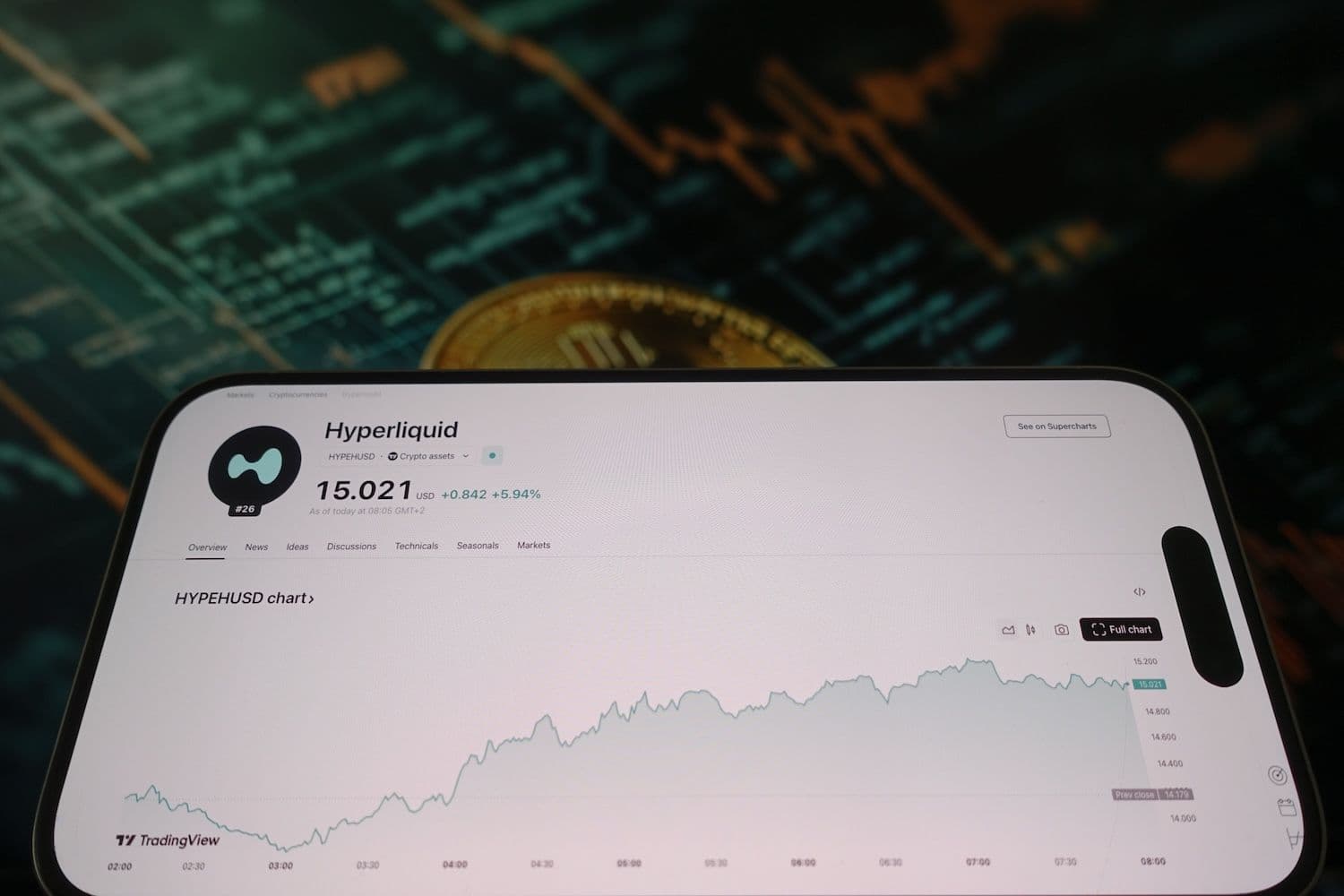Hyperliquid, the leading on-chain decentralized derivatives exchange, has unveiled a new feature under its HIP-3 framework that dramatically reduces trading fees for newly deployed markets. The upgrade, called growth mode, slashes all-in taker fees by more than 90 percent in a bid to accelerate liquidity formation and incentivize market makers on nascent perpetual contracts.
The announcement marks another aggressive expansion from Hyperliquid, which has rapidly established itself as a dominant force in decentralized finance by processing over $300 billion in monthly perpetual contract volume and generating approximately $1 billion in annualized revenue. With growth mode, deployers can now activate ultra-low fee structures on a per-asset basis without requiring centralized approval, reinforcing Hyperliquid's position as a direct competitor to centralized trading venues like Binance and Bybit.
Under the new fee schedule, all-in taker fees drop from the standard 0.045 percent to between 0.0045 percent and 0.009 percent for markets operating in growth mode. For traders who have achieved top-tier status through staking and volume, fees can fall even further to between 0.00144 percent and 0.00288 percent. These rates represent some of the lowest trading costs available in the cryptocurrency derivatives market, whether centralized or decentralized.
The mechanics of growth mode require deployers to configure their fee scale, which determines the portion of user trading fees they retain before any discounts such as aligned stablecoin collateral incentives. The fee scale must be set between 0 and 1, and once activated, the settings lock for 30 days to maintain market stability and prevent arbitrary changes that could disrupt trading activity.
To qualify for growth mode, markets must meet specific criteria designed to prevent parasitic volume capture from existing Hyperliquid products. Markets cannot overlap with any validator-operated perpetuals currently live on the platform. The restriction excludes crypto perpetuals, crypto indexes, exchange-traded funds, and assets closely tracking existing markets such as gold perpetuals pegged to PAXG. This framework ensures that growth mode serves its intended purpose of expanding the platform's product range rather than cannibalizing established markets.
The growth mode launch builds on HIP-3's activation on October 13, 2025, which introduced permissionless deployment of perpetual futures markets on Hyperliquid's HyperCore infrastructure. Under HIP-3, any deployer who stakes 500,000 HYPE tokens can launch their own perpetual exchange, selecting oracles, leverage limits, and fee structures while earning up to 50 percent of trading fees generated by their markets.
The staking requirement, currently worth approximately $20 million at prevailing HYPE prices, serves as both a security bond and an incentive alignment mechanism. Validators retain the authority to slash deployer stakes in cases of malicious market operation, though Hyperliquid's documentation notes that extensive technical work has made slashing unlikely under normal circumstances.
Since its mainnet launch, HIP-3 has already demonstrated significant traction. The first builder-deployed market, XYZ100 from TradeXYZ, tracks the top 100 U.S. non-financial companies and has generated over $1.3 billion in trading volume within weeks of launch. On November 13, Felix Protocol launched a Tesla perpetual contract, showcasing HIP-3's capacity to support equity-based derivatives alongside traditional cryptocurrency products.
The upgrade positions Hyperliquid to capture trading activity across asset classes that have historically remained off-chain, including equities, foreign exchange pairs, commodities, treasuries, and prediction markets. According to analysis from FalconX, even capturing less than one percent of derivatives trading on the Magnificent Seven tech stocks could generate approximately $800 million in additional fees for the platform.
Industry observers have responded enthusiastically to the growth mode announcement. Comments on social media platform X characterized the feature as a turbo-boost for innovation, with users highlighting the potential for 5 to 10 times lower costs compared to legacy blockchain infrastructure. The combination of permissionless deployment and dramatically reduced fees creates conditions for a proliferation of experimental markets that validators might never have approved under the previous governance model.
The timing arrives amid intensified competition in the decentralized perpetuals sector, with protocols like Aster and Lighter vying for market share. Hyperliquid's growth mode represents a strategic effort to leverage its infrastructure advantages while addressing one of the primary barriers facing new markets: the cold-start liquidity problem. By reducing fee friction, the platform aims to attract both market makers and traders to nascent products during their critical early stages.
Despite the positive reception, HYPE has experienced price volatility amid broader cryptocurrency market weakness. The native token currently trades around $38.50, down from its all-time high of approximately $59 reached in September 2025. According to CoinGecko data, Hyperliquid maintains a market capitalization exceeding $10 billion, ranking among the top 20 cryptocurrencies by value.
The platform's fee structure continues to channel 97 percent of trading revenue toward HYPE token buybacks through the Assistance Fund, creating structural demand that has supported prices despite market headwinds. Hyperliquid has emerged as one of the most active buyback programs in crypto, with approximately $645 million in buybacks executed during 2025 alone.
Looking ahead, growth mode adds another tool to Hyperliquid's arsenal as it pursues its vision of becoming an infrastructure layer for all on-chain finance. The approach mirrors the platform's earlier success in spot markets, where permissionless listings and deployer fee-sharing have attracted a wave of new token launches.
For builders contemplating HIP-3 deployments, growth mode offers a pathway to bootstrap liquidity without the burden of high initial trading costs. Whether the ultra-low fees translate into sustainable market depth will depend on how effectively deployers execute their market-making strategies and whether traders follow the incentives to new products.
As decentralized finance continues its structural shift toward permissionless infrastructure, Hyperliquid's growth mode represents a significant wager that reduced fees and open access can overcome the network effects that have long favored centralized incumbents.

